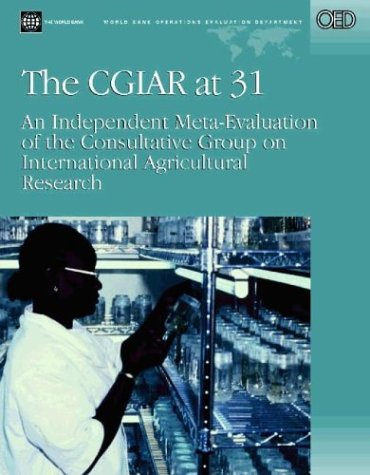Operations Evaluation Studies
1 total work
The Consultative Group on International Agricultural Research (CGIAR) was established in 1971 to scale up years of effort by the Rockefeller and Ford Foundations in supporting four international agricultural research centres in Colombia, Mexico, Nigeria and the Philippines. As the first global program to receive grants from the World Bank's net income, the CGIAR's original mission was a strategic, science-based focus on increasing ""the pile of rice on the plates of food-short consumer."" Today it supports 16 international Centres, and from an initial 18, its membership has expanded to 62, including 24 developing and transition economies. The CGIAR at 31, a meta-evaluation of the CGIAR, finds that CGIAR's productivity-enhancing research has had sizeable impacts on reducing poverty by increasing employment, raising incomes, lowering food prices, and releasing land from cropping. However, the CGIAR is facing huge challenges. It is less focused on enhancing agricultural productivity than it used to be. The report finds that CGIAR's current mix of activities reflects neither its comparative advantage nor its core competence.
It also finds that CGIAR has not responded sufficiently at the System level to the biotechnology revolution, the increasing importance of intellectual property rights, and the growth of private sector research. The evaluation makes several recommendations to address the challenges facing CGIAR, and enhance CGIAR's role in agricultural research into the future.
It also finds that CGIAR has not responded sufficiently at the System level to the biotechnology revolution, the increasing importance of intellectual property rights, and the growth of private sector research. The evaluation makes several recommendations to address the challenges facing CGIAR, and enhance CGIAR's role in agricultural research into the future.
